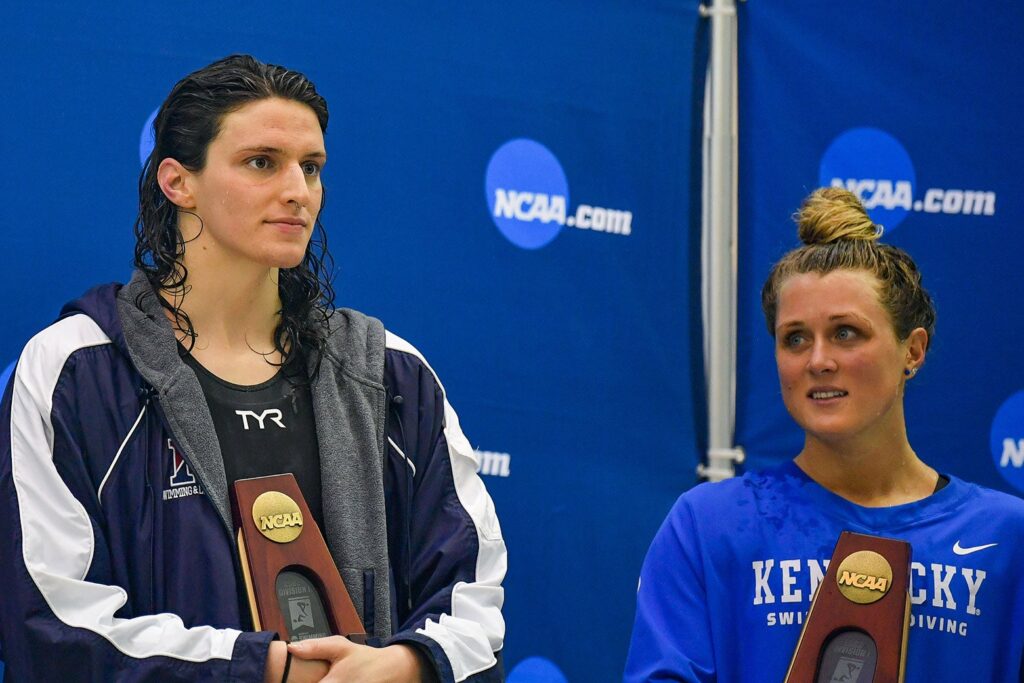
On Tuesday, the University of Pennsylvania, under pressure from former President Donald Trump, concluded a Department of Education-led civil rights investigation regarding the inclusion of transgender swimmer Lia Thomas on the women’s team during the 2021–22 season. At that time, Thomas was eligible to compete under NCAA policy, although the organization has since prohibited trans women from participating in women’s categories. In a move to appease the administration, Penn has erased Thomas’ competitive records and plans to issue apologies to athletes who were “disadvantaged” by her participation.
The idea of creating a third gender category for transgender athletes has gained attention as a potential solution to the ongoing debate surrounding their participation in sports. Gymnastics icon Simone Biles recently engaged in this discourse, responding to conservative activist Riley Gaines on social media. Biles advocated for inclusivity, suggesting the creation of a new category where transgender athletes could compete safely. Her post, which reached nearly 2 million followers, proposed, “Maybe a transgender category IN ALL sports!!” However, Biles later softened her stance and apologized for the personal nature of her comments.
The Debate Over a Third Category
While the notion of a third category might seem like a straightforward solution, it is fraught with complexities. The concept of a separate category for trans and intersex athletes—beyond traditional male and female divisions—aims to provide an alternative to outright exclusion. However, it also raises concerns about competitive fairness and the potential marginalization of transgender athletes.
Critics argue that creating a separate category for transgender athletes perpetuates a form of “othering” that exacerbates their isolation. Danne Diamond, formerly of the LGBTQ+ sports advocacy group Athlete Ally, emphasized that trans athletes should have the opportunity to compete in the category they identify with, rather than being forced into a separate division. Diamond stated,
“Forcing trans athletes into a separate, third category is harmful ‘othering’ that only furthers the isolation and discrimination trans athletes face.”
Historical Context and Recent Developments
The discussion around transgender athletes is not new. Michael Waters’ book, The Other Olympians, highlights the presence of trans and intersex athletes since the 1930s. The idea of a third category has been suggested before, with USA Powerlifting creating the MX division in 2020 for trans and nonbinary athletes. However, this move was met with criticism for its potential to segregate rather than integrate.
In 2023, World Aquatics banned trans women from competing in the women’s category at elite events and introduced an open category at a World Cup swim meet in Berlin. Yet, the initiative was short-lived due to a lack of entries, underscoring the challenges of populating a separate category in sports.
The Broader Implications
The limited number of transgender athletes in competitive sports raises questions about the viability of a third category. Even if trans athletes were as numerous as their cisgender counterparts, the idea of segregating them into a separate division remains contentious. It echoes the flawed concept of “Separate but Equal,” which historically has been used to justify discrimination.
Some genderqueer athletes, like nonbinary activist Jake Fedorowski, advocate for nonbinary divisions in sports. However, this should be a personal choice rather than a mandated separation. The broader sports community must consider how to integrate trans athletes without resorting to exclusionary practices.
Looking Forward
The debate over transgender athletes in sports is emblematic of larger societal discussions about gender identity and inclusion. As Katie Barnes outlines in her book Fair Play, the research on trans women’s advantages in sports is inconclusive. The focus should be on embracing diversity and recognizing the unique contributions of all athletes, regardless of gender identity.
Ultimately, the goal should be to foster an inclusive environment where all athletes can compete based on their skills and abilities. As the sports world continues to evolve, the challenge remains to balance fairness with inclusivity, ensuring that all athletes have the opportunity to participate in the sports they love.







